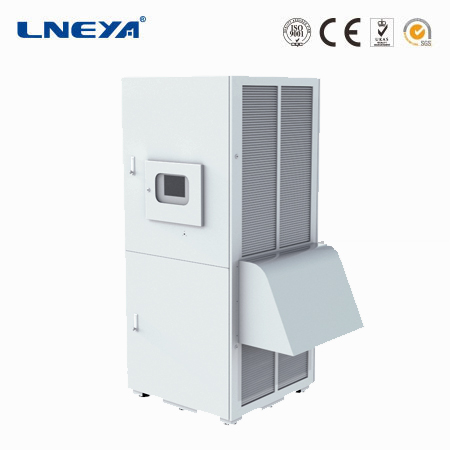Because battery storage systems are located outdoors in many environmental extremes, it is important to design the chiller to withstand wind, rain, UV rays, and other elements, in addition to ensuring that it can handle large fluctuations in ambient temperature. LNEYA Refrigeration experts analyzed many different usage scenarios of ultra-high and ultra-low ambient temperatures to ensure that the chillers can operate reliably under climate fluctuations. After experimenting with different components, our engineering team developed a structure with a high-performance compressor and refrigerant that cools efficiently even at extreme temperatures, while being able to withstand extreme environmental conditions.
Batteries in remote locations mean there is nowhere to put standard chillers. Drawing on decades of experience designing custom chiller shapes and sizes, our design engineers have discovered that door-mounted chillers are designed to efficiently cool systems and withstand climate change and extreme conditions without taking up space.

A battery energy storage system (BESS) ensures a steady supply of low-cost electricity for commercial and residential needs, reducing our over-reliance on fossil fuels and reducing carbon emissions for a cleaner environment. However, the electrical enclosure in which the battery energy storage system is housed is often located outdoors and is exposed to extreme temperatures, inclement weather, humidity, dirt and dust, and like most heat-sensitive electrical The passage of time reduces power output and service life. Batteries themselves also generate heat when charging and discharging, so autonomous cooling and heating should be introduced into the BES enclosure to maintain the ideal temperature range. A closed-loop cooling system is the best solution to remove excess heat and protect heat-sensitive components while keeping battery storage compartments clean, dry and free from airborne contaminants.
 LNEYA
LNEYA
 简体中文
简体中文


















































































